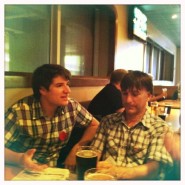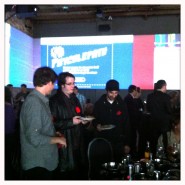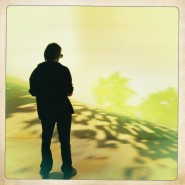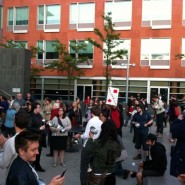Last week a few of us went to Waterloo, ON for the CGSA conference at Congress. Here’s a report from three of us that attended.
Carolyn Jong:
I’ve said it before and I’ll say it again: small conferences are the way to go. Kudos to the organizers for creating a friendly and relaxed environment. Aside from an interesting bar-side discussion on glitches, one of the highlights for me was Brian Greenspan’s talk on the political dimensions of locative games. Drawing on Jacques Ranciere’s notion of politics as any disruption that reconfigures who or what is visible, he asked us to think about what happens when we treat NPCs as subjects, and subjects as NPCs. Looking at some of the games developed by students at his lab at Carleton University, he talked about issues of consent, access, and inclusion, and suggested that locative games are most ethical when they force us to recognize and engage with others.
On a semi-related note, Salvador Garcia-Martinez and I presented the findings from our literature review on serious applications of motion-based games as part of a session called “Serious Business” (personally I preferred the heading “Bodily Pleasures,” but we got moved at the last minute).
Will Robinson:
Dr. Jonathan Lessard, incoming Concordia professor in the CART program, gave an excellent presentation regarding game mechanic analysis. He rightly explained that as it stands the term game mechanic is devoid of analytic rigor, being used to describe a plethora of phenomena (see Wikipedia’s chapter breakdown on game mechanics if you do not believe it). In hopes of building a new theoretical framework for classifying, defining, analysing what we might normally consider “game mechanics,” Lessard deployed a watered down speech act theory (most likely because there is very little time to say anything at CGSA). He attempted to demonstrate the strength of SAT as a metaphor for HCI with regards to videogames. I found the metaphor more than apt and questioned whether or not it was a metaphor at all… In the end, there were hints and hopes of future collaboration writing on the subject.
William Robinson presented his Master’s thesis research. He attempted to forward the claim that at certain moments players are performing artistically in games. He presented his research on the history of sports philosophy and its debates surrounding the aesthetics of play. The paper was well received and co-won best presentation alongside Brian Greenspan’s work on revolutionary NPCs (that description, it should be noted, does an injustice to the quality and depth of the work).
Joachim Despland:
I learned much, had a great time, and met many brilliant minds while attending CGSA as a non-presenting tourist! Some personal highlights include: Jason Nolan’s comparison of game design with early childhood education and his appeal for less heteronomic approaches in both disciplines, with an emphasis on the intrisinsic interest and motivation of the player/student (and reminding us that theory building, theory testing, and reflecting is not only what science is about but also at the center of both play and learning); Emma Westecott’s call for more playfulness in the act of creating games itself; Daniel Joseph’s materialist analysis of the hidden processes that make possible the existence of an artifact such as Superbrothers: Sword & Sworcery EP, from the mining of the copper used to produce the iPad on which the game runs to the invisible economy of the garbage dumps where the device inevitably ends up; Alison Harvey’s detailed study of the dynamics of leadership in MMO play; and Lee Knutilla’s surprising use of Special Relativity as a useful metaphor for thinking about the concept of time in games.
Adam van Sertima:
(Adam’s contributions come in photo form!)




